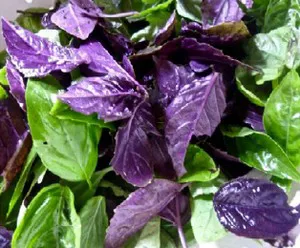 The Lamiaceae family is well known for being a rich source of polyphenol compounds - phenolic acids and flavonoids in particular. Among the 200 genera, basil (Ocimum basilicum L.) is definitely one of the most important, due to its considerable genetic diversity, as there are up to 150 reported species.
The Lamiaceae family is well known for being a rich source of polyphenol compounds - phenolic acids and flavonoids in particular. Among the 200 genera, basil (Ocimum basilicum L.) is definitely one of the most important, due to its considerable genetic diversity, as there are up to 150 reported species. Researchers from the Federico II University in Naples and the University of Salerno have tried to assess the antioxidant power and antimicrobial activity of 'Napoletano' green and purple basil. Results showed that sample extracts were characterised by a generally higher polyphenol concentration than those from other more traditional and geographically variable basil varieties.
The phenolic acids which are more abundant in Napoletano basil are: gallic acid, rosmarinic acid and ferulic acid. The first was more abundant in the green variety (40%), while the second was more abundant in the purple variety (34%).
Purple basil revealed a higher antioxidant activity compared to the green variety, probably due to its high anthocyanin content. In addition, the purple variety also has a higher falvonoid content, especially quercetin (62.5%).
As regards antimicrobial properties, both varieties showed antimicrobial actions against a wide range of micro-organisms harmful for both man (Listeria monocytogenes, Escherichia coli) and plants (es. Rhizoctonia solani, Fusarium oxysporum, Botrytis cinerea), thus revealing a moderate to high natural preservative capability.
Last but not least, results showed green and purple Napoletano basil to be a good source of antioxidants of possible nutraceutical interest.
Source: Gian Carlo Tenore, Pietro Campiglia, Roberto Ciampaglia, Luana Izzo, Ettore Novellino, 'Antioxidant and antimicrobial properties of traditional green and purple "Napoletano" basil cultivars (Ocimum basilicum L.) from Campania region (Italy)', 2016, Natural Product Research, DOI: 10.1080/14786419.2016.1269103
